…..Third Prize Is You're Fired
October 6th, 2010
Continuing the lengthy look at training camp invitees league wide, here’s part three. Part one can be found here, and part two is here.
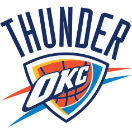 Oklahoma City
Oklahoma City
– View Thunder roster
– View Thunder salary information
With a full roster, Oklahoma City saw fit to bring in four more. They signed undrafted point/combo guards Jerome Dyson of UConn and Tweety (Demond) Carter of Baylor, as well as fellow undrafted swingman Elijah Millsap of UAB. They later brought in former University of Oklahoma centre Longar Longar to round up the numbers and complete a roster of 19. Curiously, but probably rightly, they did not bring in any of their currently unsigned second rounders. 2009 pick Robert Vaden was rumoured to be a candidate, but eventually did not come over, and 2010 picks Latavious Williams and Ryan Reid also did not sign, despite currently not being under contract elsewhere.
Dyson played for the Cavaliers in summer league, at which time I wrote this about him:
There was a time when averaging 20/5/5 at UConn meant a guarantee to be drafted. Not so for Dyson. For all the scoring numbers, Dyson is far from a complete scorer; for all the assist numbers, Dyson is far from a point guard. And at 6’3, he’ll struggle to be a shooting guard as well.
Much of his production comes from the fast break, where he is unbelievably good. He can snake his way to the basket with blistering speed, and finish with athleticism despite his small size. In the half court, however, he can’t get to the basket as readily. This is due in no small part to his jump shot, which doesn’t really exist. And while Dyson has the athletic tools for perimeter defence, he lapses.
If he goes to the D-League – and he should, because he’s going to be on the cusp of a call-up – then he could put up similar numbers to that. But without a jump shot, his ridiculously tremendous upside potential is limited.
That last point is the reason why he is here. Dyson is not quite good enough to play in the NBA, but he could be one day if he hones that jumper slightly. For that reason, he needs to be in the D-League; for that reason, Oklahoma City want him on THEIR D-League team. That’s why they’ve signed Dyson, because now, when he is waived, he will be allocated to the Thunder’s self-owned affiliate, the Tulsa 66ers. From there, Dyson is free to be called up by any NBA team, not just the Thunder; however, Oklahoma City will have the inside track on his progress. It’s all deliberate.
The same applies to Carter, another guy on the cusp. Tweety played with the Nets in summer league, at which time I wrote this:
Carter had a much improved senior season at Baylor after Curtis Jerrells left. Rather than just standing in the corner and waiting for passes, Carter was allowed to handle the ball and run the offence, and he proved that he could. Carter was efficient with the ball, ran the team in the open floor and the halfcourt, and mixed in his long range jump shot with an endless series of floaters. He finished the season averaging 15.0 points and 5.9 assists per game; to put that into some context, the 5.9 assists per game tied for 5th in Division One. And three of the five players ahead of him (Evan Turner, John Wall, Greivis Vasquez) were all first rounders.
He’s still small, very small. Not as small as Devan Downey, but still small. However, save for about 20 lbs, some leaping ability and four years of media love, there’s not much to separate Tweety from someone like A.J. Price. Such is life.
…..as well as of Millsap, who played for Detroit:
Elijah is the younger brother of Paul and John. Paul, I’m assuming you know about; John can be found here. Elijah is the youngest and smallest of the three, with a great frame for a shooting guard (6’6, 210), but the skills of a forward. He does not have a good outside jump shot and turns it over a huge amount, an undersized face-up power forward in an undersized small forward’s body. For that reason, he’s going to take John’s career path, not Paul’s.
Longar Longar will no doubt join them there. He doesn’t have a chance of making the big league roster; he’s already 27 years old and is just too damn ordinary. He’s here to make up the numbers in practice, as regular backup centre Nick Collison is struggling with injury. However, the D-League veteran and local boy has been a solid contributor throughout his career. Last year for the L.A. D-Fenders, Twice As Longar averaged 6.7ppg, 5.7rpg and 1.3bpg; the year before, he averaged 7.8ppg, 6.2rpg and 1.4bpg. Longar will probably return to the D-League, and since the L.A. D-Fenders no longer exist, he’s a candidate to join the Tulsa 66ers as well.
Prediction: Oklahoma City’s roster is 15 full even before those guys. Players like Daequan Cook and Mo Peterson can’t really play, but they combine to form about $9 million in expiring salary. Add the useful Nick Collison to that, and you’re nearer $16 million. You can’t trade those contracts if the player aren’t on the roster. And while there exists the strong possibility that the Thunder trade none of the three, they’d be taking away that option if they cut any of them for Jerome Dyson. Dyson’s good, but they don’t need him. He’d be a luxury, and you can’t afford luxury players with roster spots at a premium. He should instead go to the Tulsa 66ers, averaging about 20/5/5, and go the Will Conroy route. Hopefully he’ll have more luck than Will ever has.
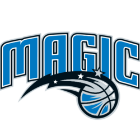 Orlando
Orlando
– View Magic roster
– View Magic salary information
Orlando’s roster was set before training camp began. They spent their MLE on Chris Duhon and Quentin Richardson, brought back Whit Eboy, signed Daniel Orton, and committed $15 million next year alone to J.J. Redick, whose backup shooting guard role they had just marginalised by signing Q. Some good things there, and some strange ones. Nevertheless, with a roster of 14 players in place, Orlando brought in two more; veteran free agent power forward Malik Allen, and second-round draft pick Stanley Robinson.
Robinson would in theory replace Matt Barnes, a defensive minded small forward with athleticism and the ability to get out and run. Orlando should have considered themselves lucky to get him; Robinson was long considered to have first round talent, and with good reason. He’s a 6’9 athlete with good passing, rebounding and defensive skills, who can post up a bit, run the court, and may one day develop a jump shot now that he has learnt not to shoot on the way down.
Malik Allen, meanwhile, will take a lot of inefficient long two-point jump shots.
Prediction: Allen serves no obvious purpose on a team already with Brandon Bass and Ryan Anderson. This is particularly because of Bass, whom Allen somewhat resembles, except with worse defence, rebounding, post-up play, isolation play, ability to get to the free throw line, and overall productivity. If Allen ever wants to make it back into the NBA, he had best turn those 20 footers into 25 footers, because if you’re going to only score in this league, then you’d better have more points than shots. Robinson, meanwhile, would help the team in a role that no one else on it could really fill, other than maybe Quentin Richardson. Unfortunately, it doesn’t look like they want him. The signing of Q, the re-signing of Redick, and the increased small forward opportunities for Rashard Lewis, have already marginalised the role of Midnight Pietrus – so named because he couldn’t be any blacker; his slightly less black brother, Florent, is therefore known as 11.58pm – and if Midnight doesn’t have much of a role, then Robinson definitely doesn’t. And whilst more Shard at small forward might open up the vague possibility of one more spot for a power forward, Malik isn’t good enough to fill it. Malik has had ten years of experience, but not ten years of improvement. Orlando have the roster space for both players, yet because their payroll is already freaking enormous, they probably haven’t the financial incentive to keep either. The same was true of their signings of Morris Almond and Linton Johnson last season; both had the talent to make it, but because of the money, neither did.
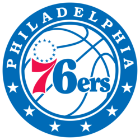 Philadelphia
Philadelphia
– View Sixers roster
– View Sixers salary information
Philadelphia’s offseason involved trading away one of their best players for a bad contract at a position of no need, making an obvious if sensible draft pick that further imbalances a terribly unbalanced roster (time will prove he is better at small forward), signing a 34 year old third stringer, and picking up a free power forward prospect signed cheaply for four years. Until that fourth move, things hadn’t gone too well. Yet despite their imbalanced roster, underwhelming talent base, lottery status and multiple short- and long- term needs, the Sixers didn’t attract much quality to training camp. Whereas other teams have stocked up on fringe talents, Philly have brought in only three players; undrafted Mercer guard James Florence, former Pistons draft pick Trent Plaisted, and veteran point guard Chris Quinn.
Last season, Florence averaged 17.7ppg, 3.1rpg and 4.6apg in his senior Mercer. That’s the good bit. The bad bit is that he did that on percentages of 41%/32%/75%, alongside 3.7 turnovers in only 33 minutes per game, on an Atlantic Sun Conference team with few quality wins and who couldn’t even beat East Tennessee State for the conference championship. While his assist totals were nice, and his scoring totals decent, Florence’s CV looks fairly ordinary from an NBA perspective. Watching him in his senior season, these were the disjointed notes I managed:
highest scorer….high scorer….takes too many 3’s + has lots of TO’s…..gets to line a ton…..high steals……pushes ball…..fairly quick……smart….pump-fakes.
So, that’s about all I’ve got there.
Quinn has found himself in a good spot, a jump shooting point guard on a team that needs both jump shooters and point guards. Four of the best outside shooters on Philadelphia’s team – Jodie Meeks, Jason Kapono, Andres Nocioni, and even Darius Songaila – figure to play about 1,500 minutes combined all season. Additionally, while the duo of Evan Turner and Andre Iguodala figure to do a lot of the half court playmaking, the point guard tandem of Jrue Holiday and Louis Williams aren’t great at it. If nothing else, Quinn can run the pick-and-roll and shoot the three pointer. Philadelphia need those skills. Then again, Philadelphia need quite a lot.
In signing Plaisted, Philadelphia have pulled off the unusual move of signing another team’s draft pick. Detroit decided not to retain Plaisted’s draft rights beyond this summer – whether this was their own decision, or done at the request of Plaisted and his agent, is unclear. The last time this happened was in 2007, when Joseph Blair asked Seattle to release his draft rights so that he could sign with Chicago for training camp. However, the fundamental difference is that Blair was drafted 11 years previously, while Detroit only drafted Trent in 2008. As for the most recent time before that, I have no idea. Needless to say, it’s an extremely rare move, and a worrying misappropriation of assets from a team who:
a) traded a first rounder in obtaining those rights in the first place, and
b) who did this only last year.
Rough couple of years for Detroit management. Need a second wind. As for Plaisted himself, he brings athleticism to the table, but a series of injuries in his professional career have hindered the development that he needed in order to become an NBA player. It won’t be this time, if ever.
Prediction: The Sixers still need shooting, and Quinn is definitely a shooter. They also still need good centres, yet they decided on Tony Battie instead. The problem there is that since Philadelphia are paying so much for such a mediocre team, salary slots for the inactive list players are hard to come by. There’s no value in tacking on minimum salary slots to mediocre veterans if they’re not going to change your win total in any significant way. This should have put the kybosh on the Battie signing, but since it didn’t, it might instead by the kybosh on keeping Quinn. Chris turned 27 this week and won’t get any better than this. It’s probably not worth it. But if any of the three are to make it, it will be him.
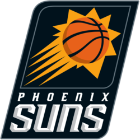 Phoenix
Phoenix
– View Suns roster
– View Suns salary information
After a summer of great upheaval, expenditure, acquisitions and losses, Phoenix had their roster mostly finalised by August, when the completely unnecessary Hedo Turkoglu trade was completed. The Suns promptly brought back one of the components of that trade – journeyman centre Dwayne Jones – to compete for a spot in training camp alongside second year centre, Garret Siler. The Suns also brought in Zabian Dowdell – who they would have signed last year as well, were it not for an injury – to compete for a spot at guard alongside Matt Janning (signed soon after summer league ended) and veteran Chucky Atkins.
Atkins spent last year with Detroit, but showed only that, at age 35, he was probably done. Chucky kept the turnovers down, but he didn’t shoot the ball well, and hasn’t done in the three seasons since his unexpected but genuinely effect career year at the age of 32. With that one anomalous exception, Chucky’s play has declined for a decade; as thoroughly solid as he once was, the last three years have seen a significant decline in his speed and skills. His only chance of a redux now is if he starts shooting again as well as he did in his first Pistons stint. This does not seem likely.
Janning went to summer league with both the Suns and Celtics, and impressed. He averaged 12.6 points and 5.4 rebounds for Phoenix, alongside 11.5 points and 5.0 rebounds, and when both teams tried to sign him afterwards, he took the one offering the most guaranteed money ($25,000). Craft and guile more than size and speed were the reasons behind Janning’s surprising success; versatility, sense, and decent jump shot/ballhandling are skills that translate, even if 6’4 and 195lbs don’t. He probably can’t defend his position, but then again, J.J. Redick never used to be able to do that either. Yet he can now.
Dowdell’s stock has been plummeting for three years, and last year was no different. After injury prevented him from signing with the Suns, Dowdell went to the D-League, where he put up rather pedestrian averages of 13/3 (perhaps still recovering from the injury). He was soon bought out of his D-League contract by Spanish giant Unicaja Malaga, but didn’t play particularly well there, averaging 6.4 points and 1.9 assists in 21 games, recording 134 points on 138 shots. Dowdell is best defensively and in transition, two things the Suns require; he’s also a good slasher, a fairly high IQ player, with good energy and a great wingspan. He ticks most of the boxes, even if he could be a better outside shooter. There’s a reason his stock is as high as it was. However, after a couple of down years (he scored 20ppg in 2008-09, but was only in the Italian second division for some reason), the now 26 year old Dowdell needs to make his biggest moves now. With a legitimate chance of making the Suns team, though, this might be that.
Jones continues to rebound the crap out of the D-League, and it is for this simple reason that he keeps making it back to the big league. He averaged 17.6 points and a whopping 16.0 rebounds (6.2 of which were offensive) for the Austin Toros last season, alongside 1.8 blocks per game. Offensively, Jones doesn’t offer much; he doesn’t have touch or much strength, gets stripped easily, offers nothing away from the basket, and while he gets fouled a lot, he’s not a good free throw shooter. But that rebounding rate can’t be discredited. Phoenix signed Jones down the stretch of last season, traded him as filler in the Hedo deal, and brought him back after Toronto cut him; this time around, he has a $50,000 guarantee, and every chance of making the team again.
Siler has been covered on this site a great many times, mainly because he’s so freaking intriguing. Arbitrarily, here’s a blurb from him in the Nets summer league round-up:
The Hawks signed Siler for training camp last season, but despite their perennial lack of centres, they did not keep him. Siler then went to China, where he averaged 14.1ppg, 9.3rpg and 1.6bpg in only 23.2 mpg. His per minute numbers are obviously substantial, and the field goal shooting (76%) was as ridiculously freaking efficient as ever, but unfortunately Siler can’t stay on the court. After putting up 13 points, 14 rebounds, 7 blocks and 6 fouls on 32 minutes on debut, Siler’s PT after that inconsistent due to his foul problems. Only four times did he play more than 30 minutes per game, and he once fouled out in only 10. Siler averaged 4.2 fouls per game will playing less than half of it, which is quite an extreme problem. (Mind you, Amir Johnson just got $7 million a year after a lifelong struggle with the same problem.)
Scoring that efficiently cannot be overlooked, though. The lowest field goal percentage Siler has ever shot anywhere, ever, is 68.9%. That is simply ridiculous, and it makes a team want to overlook the flaws in his game. Rightly. Siler has a chance.
True to form, Siler shot 83% from the field in that tournament. And he also fouled 12 times in 43 minutes. Those are the things Garret Siler does, for now and for ever, in accordance with prophecy. I want to see that on an NBA court.
Prediction: I’ve said it so many times that it’s becoming kind of repetitive, yet it bears no less true – Phoenix really, really, really, really need rebounding help. Amongst their big men, the only average calibre rebounder is Robin Lopez, and even he’s only been average for one season. He was a poor rebounder in both his rookie year and his college career. Other than him, Channing Frye is poor at it, Hakim Warrick is flat out bad at it, and Hedo Turkoglu is bloody awful. And yet that’s all of the Suns main big man rotation right there. They’re going to rebounding whether they know it yet or not, and this advantages Jones more than Siler. Additionally, despite his good summer league showing, Janning doesn’t offer the defence that Dowdell does. Whoever wins the third string point guard role isn’t going to play a minute behind the two headed Nash/Dragic monster anyway, but nevertheless, the need for a situational defensive specialist exists on this Suns roster that has no good defensive options for small guards. (At least, I’ve concluded that it does.) Zab-Dowd might be it; Chuck-At definitely is not. Thus, I predict Dowdell and Jones.
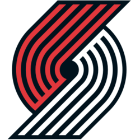 Portland
Portland
– View Blazers roster
– View Blazers salary information
In addition to finally re-signing Patty Mills, the Blazers brought in four more to bring their roster up to the full compliment of 20. They signed former Clemson big man Raymond Sykes, USC’s leading scorer and best perimeter defender last season Dwight Lewis, recent Oregon State graduate
Seth Tarver and former Wake Forest centre, Eric Williams. Williams and Lewis have already been waived, and the rest know in advance that they’re battling for 0 spots. The Blazers already have 15 guaranteed contracts, and that doesn’t include Mills.
Sykes graduated from Clemson in 2009, and went to camp last summer with the Phoenix Suns. He didn’t have much of a chance of making the team, however, and thus didn’t. Sykes subsequently spent his first professional season in the D-League, averaging 10.2 points, 4.6 rebounds and 1.0 blocks per game for the Sioux Falls Skyforce, mainly off of the bench. Sykes shot 58% from the field for the simple reason that most of his shots are dunks; he’s a dunker, an athlete, an energy player and a help defender, who can help on both ends of the floor for that reason. Unfortunately, he’s also doing that at 6’8.
Lewis just graduated from USC, where last year he was both their leading scorer and best defender. (Marcus Johnson gambled a bit too much for my liking.) He’s 6’5, athletic, fundamentally sound and strong, with all the physical tools to be such a defender at the next level. However, while he was the team’s leading scorer, he wasn’t a particularly good one. Lewis scored 13.8 points per game, but used 36mpg to do so, and shot less than 40% from the field. He is not a good outside shooter or ball-handler, and is a finisher not a creator. This is evidenced in those senior year numbers; as the supporting cast around him got worse, his offensive production went down, not up. His decent defence won’t be enough on it’s own. Even Trenton Hassell was a scorer once, both at Austin Peay and in his rookie year. (He really was. His knuckleball jump shots used to go in. They quickly stopped doing so.)
Tarver has a similar skill set to Lewis; he comes to the Blazers fresh from winning the Pac-10 defensive player of the year award, leading the conference with 2.2 steals per game. (Actually, there was a stop-gap in between; after graduating Oregon State in the spring, Tarver played in a minor league called the NABL in the summer time, joining a team called the Portland Showtime. The Showtime also landed Portland State graduate Dominic Waters, who went to summer league with the Jazz, and who has since tried out for/signed with four more teams. Busy few months for Dominic Waters.) Tarver’s offence is what holds him back; he scored 10.2 points per game, and got them on an efficient 48% from the field, but at 6’5, he has no outside shot at all. He can finish in the open court and make some mid-range shots, but he is not as big, athletic, quick or versatile as someone like Ronnie Brewer.
Williams graduated from Wake Forest in 2006, and has had several NBA looks since. This is his first NBA contract, however. He has spent his entire career to date in Italy, and averaged 13.7 points, 7.9 rebounds and 2.0 steals in 26 minutes per game for Scavolini Pesaro last season. Williams is a bit old boy – about 280lbs, standing only 6’9 – and is exclusively a post player. He rebounds well, has touch and footwork around the basket, but he does nothing away from it, and won’t defend the perimeter. At 6’9, he’s also a bit small for the NBA, despite his girth, and he also turns it over a lot. A lot. How much is a lot? 3.1 times per game last year, in only 26 minutes. Hard to be an offensive focal point when you’re shooting 53% from the line and turning it over like that.
Prediction: None of them. Not even Mills.
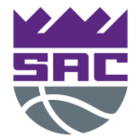 Sacramento
Sacramento
– View Kings roster
– View Kings salary information
If they’re not doing so already, the Kings might be regretting signing Antoine Wright to a guaranteed contract. Nothing against Antoine, who’s a reasonable player, but the calibre of training camp signings that the Kings have made make him largely redundant. The Kings were already deep in the backcourt and on the wings, with Tyreke Evans, Beno Udrih, Omri Casspi, the returning Francisco Garcia and the much improved Donte Greene set to take all 144 of those nightly minutes. Pooh Jeter was signed to a guaranteed two year deal to act as the deep bench guard, and the need for an inactive list swingman wasn’t much of a need of all. Bringing in Wright to fill it was fine; however, by signing players like Marcus Landry, J.R. Giddens, Joe Crawford, Luther Head and Donald Sloan to camp. At least two of those players are comparable to Wright, if not better than him. The Kings also brought in former Texas big man Connor Atchley, and have former Kansas and Cavaliers forward Darnell Jackson on a fully unguaranteed contract.
Sloan was signed before summer league began, to a minimum salary contract with a nominal $10,000 in guaranteed compensation. However, he then played very badly in summer league, averaging only 3.0 points despite starting all 5 games, shooting 22% from the field, with a near 1:2 assist/turnover ratio. Sloan improved as a scorer in his career at Texas A&M; strong, athletic enough, efficient from all areas, crafty, and able to create for himself off the dribble, but by being neither a point guard, nor a two guard, nor an athlete, nor a defender, nor a shooter, undersized at 6’3 and a bit ball-dominant, he doesn’t have an obvious role in the NBA.
Head’s been in the NBA since 2005, with five years of inconsistent playing time and endless puns to his credit. In a way, Head embodies the best case scenario for Donald Sloan; despite being a point guard that can neither dribble nor pass, Head has survived in the NBA with good defensive effort and a decent quality catch-and-shoot jump shot. Head is only ever a minimum salary player, and he needs a certain situation in which to thrive; after all, if your point guard can’t dribble, pass, or defend opposing two guards, then you’re going to need a good quality shooting guard next to him that can get the ball over halfcourt, dominate the offence, and take on the bigger defensive matchups. Luther had Tracy McGrady to do that for him in his Houston days, and fortunately for him, Sacramento have Tyreke Evans. Alongside Tyreke, or even alongside Francisco Garcia, Head could be useful.
Landry joins the team that just traded for his greatly superior brother, Carl. While Carl is a high quality NBA player, long underrated and unfortunately soon to become overrated, Marcus finds himself on the fringes. Often playing centre at Wisconsin, Marcus is reinventing himself as a three point shooting small forward at the NBA level, decently athletic and with adequate defence. He played for both the Knicks and the Celtics last season in this role, surviving most of the season on an NBA roster. However, the prognosis for such players is about a one or two year career.Bill Walker’s been lucky to have signed a four year contract; however, other players of a similar ilk (Demetris Nichols, Rob Kurz, Kaniel Dickens, Marcus Vinicius) have never gotten beyond the two year mark. This of course does not dictate that it is over for Landry, or even that it will be soon; it does, however, suggest that he needs a new string to his bow.
Giddens also spent last year with the Knicks and Celtics; he was a part of the same Nate Robinson trade that Landry was, only he went the other way. Since the rules were changed that meant only two seasons of a rookie scale contract were guaranteed, Giddens has become one of only 7 players all time to not have their third year option exercised. That unfortunate claim to fame is a testament to Giddens’s career thus far – not much has happened for him. He has spent much of his time in the D-League, and in the opportunities Doc Rivers gave him early last season to be a defence and rebounding specialist from the wing – 21 games, including one start – Giddens responded only with very little production. The same was true of his 149 minutes with the Knicks; improved, but sub-par. Giddens came into the league needing to either develop an outside jump shot or turn into Bonzi Wells, but after two seasons, neither of these have happened.
Crawford’s another former Knick who played a smattering of minutes with the team at the end of the 2008/09 season. He spent last year in the D-League, trying to get a call-up back to the big dance again; however, unable to get one, he left the D-League at the very end of the season to get some better paper in China. Crawford averaged 17.8 points, 3.1 rebounds and 3.1 assists for the L.A. D-Fenders, alongside 20.7/5.7/2.3 in his tree CBA games with Jiangsu. He’s a good all around guard, despite his lack of ideal size, who might stick in the NBA for a year if he can improve his three point stroke. Crawford shot only 29% from three point range in the D-League last season; if he can take a leaf out of his brother Jordan’s book, and put 15 points on that, then that call-up might be coming. If Crawford does not make the team, he will return to the D-League and play the waiting game again.
Atchley’s going to go back to the D-League. This seems inevitable. He will take with him the $5,000 in guaranteed compensation that Sacramento generously gave him, yet he’s not an NBA calibre player, and thus he won’t be sticking here. After a bad senior year at Texas that saw him try to become a specialist outside shooter in order to accommodate Dexter Pittman, whilst concurrently seeing his previously decent jump shot completely disappear, Atchley rebounded to have a decent first professional season in the D-League, averaging 7.4 points, 5.5 rebounds and 1.2 blocks in 18 minutes per game for the Iowa Energy. In theory, Atchley could be like Chris Andersen with an outside jump shot, a good help defender and (formerly) good shooter who won’t do much on the interior on offence, but who will hustle and jump and make himself a nuisance defensively. However, at the moment, Atchley is just a 25 year old 6’10 230 lb foul machine without the size or strength for the physical play, and who shot 0-16 from three point range last year. Long twos and excessive fouls are not the recipe for success.
Darnell Edred Jackson has been in the NBA for two full seasons, yet he has managed only 551 minutes in that time. He has 121 total points, but on 116 total shots, and while he has 109 rebounds in that time, he also has 98 fouls. Jackson can make some baskets and rebounds well, but at a not especially athletic 6’8, his defence so far has been mainly fouling. Jackson sticks in the league because of his good rebounding skills, decent offence, and his physique. However, now that he’s no longer D-League eligible, and stuck on a team with a plethora of big man talent, it might be impossible to find a minute.
Prediction: Head, Jackson and Landry. But they may only be here briefly. If and when Sacramento use their significant remaining cap space to make trades with tax-burdened teams gain assets, the roster spots will be needed more.
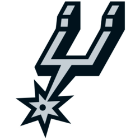 San Antonio
San Antonio
– View Spurs roster
– View Spurs salary information
San Antonio like to fill out their roster, and in recent years have shown intelligent use of the D-League as a means of stashing fringe young players that they can’t keep due to roster constraints. Draft picks Marcus E. Williams and Malik Hairston have been the main beneficiaries of this manipulation; however, both have gone now. Williams is unsigned and seemingly no longer in the team’s plans, while Hairston was waived earlier in the summer to go and join Italian powerhouse Montepaschi Siena (who subsequently released him due to injury, but who then brought him back again.) Their latest three entries into that game are guards Alonzo Gee, Garrett Temple and Curtis Jerrells, all called up to the team late last season (Jerrells also went to camp with the team in 2009), and all signed through 2011 to partially guaranteed deals with varying degrees of guaranteed. To fill out their camp roster, San Antonio also brought in veteran scoring guard Kirk Penney, their 2008 second-round draft pick James Gist, former University of Houston centre Marcus Cousin, and old man swingman Bobby Simmons. (The team also briefly signed Thomas Gardner, but only because Penney missed the first couple of days of training camp due to visa issues. Upon his arrival, Gardner was cut.)
Penney has played in the NBA before, but it was a long time ago now. Between 2003 and 2005, he spent time with the Timberwolves, Heat and Clippers, compiling 29 minutes of court time. Since then, the New Zealand international spent a couple of seasons in the upper echelons of the European game, before returning home (kind of) in 2007 to play for the New Zealand Breakers (who, despite the name and the location, play in the Australian league). Penney has absolutely destroyed the NBL since he went there, leading the league in scoring for the last two seasons, and averaging 23.2 points and 5.2 rebounds last season. He came back to America at the tail end of the season to join the D-League’s Sioux Falls Skyforce, where he scored 22.7 more points per game, before averaging a further 24.7ppg for New Zealand in this summer’s world championships. Penney was always good at Wisconsin, but now he’s even better, a terrific jump shooter with enough size and speed, who’s also dragged his defence up to acceptable levels. He may not have been in the NBA for a while, but that doesn’t mean he couldn’t have been.
Cousin played for the Rockets summer league team on account of his local ties. The Seton Hall transfer averaged 10.9 points, 8.4 rebounds and 2.1 blocks in his senior season at Houston, shooting 50% from the field and 76% from the foul line; solid numbers all, but not NBA calibre from Conference-USA. In his first professional season, Cousins averaged 5.3 points and 2.4 rebounds in 7 games for Turkish team Mersin, before moving to Israel and Galil Gilboa, where he averaged 2.7/2.0 in 16 more games along with 0.6 blocks. Cousin is a 6’11 post player who moves well enough and who will chip in with some big man stats, giving him value as a practice presence. But DeMarcus Cousins, he is not. (Additionally, for whatever reason, “Cousin” is pronounced as if it was a Turkish name called “Cusan”. Take the -San from Ersan Ilyasova, and the Koo from Mrs Koo Stark, and put them together. Koosarn. Like that.)
Simmons played in the Nets’ first 18 games last season, then played in only 5 more the rest of the way. He was injured; rather, he was DNP’d, hoping for a trade or a release that never came. Simmons’s production has fallen off wildly over the years, but he was genuinely good once, and retains a good jump shot. If he can stay healthy and if he hasn’t lost too much of his athleticism, he’s a logical candidate to make the team (which has no real backups to Richard Jefferson at small forward), in theory becoming the next Bruce Bowen/Keith Bogans type for the Spurs, who apparently are contractually obligated to have at least one wing player each season who mustn’t take a dribble.
Gist was drafted by the Spurs with the 58th pick in 2008, at a time when they’re usually drafting foreigners. In his first professional season, Gist averaged 13.0 points and 6.0 rebounds for Italian team Angellico Biella – it’s rare to even an American rookie in Serie A, let alone to have one play that well. Last year, Gist moved to Russia to play for Lokomotiv Kuban, averaging a further 11.4 points, 4.2 rebounds, 1.5 steals and 1.2 blocks per game. Gist is that classic tweener, the athletic 6’8 shot-blocker who needs to develop either ball handling skills, some much improved strength, or both. But one thing he does have going for him is a decent jump shot; despite shooting only 31% from three in Russia last season, and whilst not being very consistent with it, Gist is a decent and constantly improving outside shooter.
Like Gist, Jerrells, Temple and Gee were covered in the Spurs summer leageu roster round-up thing. Jerrells averaged 10.8 points and 4.4 assists on 43% shooting; Temple totalled 11 points in his only 1 game; Gee averaged 14.2 points, 5.2 rebounds and 2.4 steals, and was the team’s best player. All of them did better than Baylor centre Josh Lomers, who in 4 games recorded only 21 minutes, 0 points, 2 rebounds, 0 assists, 0 blocks, 5 turnovers and 11 fouls. Tough week for Josh Lomers.
Prediction: With three roster spots open, most of them has a chance. Cousin doesn’t, but the other six have legitimate chances of making the team. Simmons, if healthy, must be considered a favourite simply because of the position he plays. The others are less clear. As good as Kirk Penney is, Gary Neal has a guaranteed contract, and is too similar for the Spurs to need both. The same could be said for Gee alongside James Anderson, although there’s more separation there. With the departure of Roger Mason, the Spurs don’t have a third point guard option behind Tony Parker and George Hill, other than the unsuitable Manu Ginobili, so it stands to reason that Jerrells and Temple are fighting for that spot. With Jerrells being the more suited to the position, I’ll take him. And Gist picked the wrong year to come over – there’s too many options at power forward ahead of him, and he’s still no small forward. Ergo; Jerrells, Gee, Simmons. (Not Gene Simmons.)
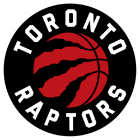 Toronto
Toronto
– View Raptors roster
– View Raptors salary information
Sadly, Toronto chose not to take part in the training camp game. They rarely do. In 2008, they signed only Jamal Sampson, who would have been the fourteenth player were it not for the fact that the Raptors were only $1,107 beneath the luxury tax threshold – in 2009, Toronto bettered that total by signing no one at all. In the season where teams are stocking up on signings so that they can then have them assigned to the D-League for future monitoring purposes, Toronto – infrequent D-League users – just don’t want to play. They did sign NBA veteran Ronald Dupree for camp, who will go to camp to battle for the 15th roster spot with incumbent
Joey Dorsey (who has only 25% of his contract guaranteed), but that’s it. (Sonny Weems also has an unguaranteed contract, but he will make the team regardless.)
Dupree has been in and around the NBA for the best part of a decade now, trying his best to make it back to the big dance once last time. He is a perennial training camp signee, as described here, and in accordance with prophecy, here he is again. Dupree played in Germany last season, averaging 12.5ppg and 4.0rpg for Bonn, shooting an un-Dooplike 41% from three point range. He also played for Toronto in summer league, averaging 10.0ppg and 4.0rpg in 20 minutes a night. Dupree has one advantage over Dorsey in the sense that he plays a position of greater need; while the Raptors have Linas Kleiza, Sonny Weems, DeMar Derozan and Leandro Barbizzle as regular wings at the moment, along with some lashings of Julian Wright, they have considerably more front court options. Between Andrea Bargnani, Amir Johnson, Ed Davis, David Andersen, Solomon Alabi, Reggie Evans and yet more Julian Wright, it’ll be hard for Dorsey to find even a single minute. However, Dorsey provides something that no one other than Evans really provides; he’s pretty bloody rugged. And he’s also better. So….
Prediction: ….Sorry, Doop.
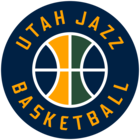 Utah
Utah
– View Jazz roster
– View Jazz salary information
Contrary to the widely reported story (originally emanating from here) that the Jazz would sign Jon Scheyer for training camp, they didn’t. After signing Earl Watson to a guaranteed deal, Scheyer and his representatives decided against signing there, knowing that the chances of him making the team had been severely crippled. Nevertheless, Utah nabbed one of the best undrafted talents when they signed Rider guard Ryan Thompson, whilst also bringing in small forward Demetris Nichols as well. Utah also have the incumbent unguaranteed contracts of Sundiata Gaines ($50,000 guaranteed) and Othyus Jeffers (nil) left over from last season, and had signed draft pick Jeremy Evans to a partially guaranteed deal ($50,000) earlier in the summer.
Despite the small school that he played for, Thompson was a viable and at one time likely draft candidate this summer, and he wasn’t basking in his brother’s shadow to do it. Thompson emerged as a big time scorer and good all-around player, smart and versatile, good defensively and when slashing to the basket. He could stand to be a slightly better shooter, and won’t ever have Jason’s size or athleticism, but he’s smart and effective.
Evans, Jeffers and Gaines were covered in the Jazz summer league round-up from back in July. Jeffers averaged 7.6 points and 3.6 rebounds per game in the tournament, while getting to the foul line a ton; however, Gaines struggled, averaging 8.6 points on 37% shooting and turning it over 2.6 times a game compared to only 3.0apg. Evans, though, impressed in his limited minutes. Playing behind James Augustine for no real reason, Evans averaged 5.0 points, 3.0 rebounds, 1.0 steals and 0.8 blocks in only 16 minutes per game, impressing the Jazz staff with his defence whilst doing enough offensively. Some more rebounds would have been nice, yet Evans won enough hearts to all but secure his place on the team, in ways not really reflected in the stat sheet. Utah’s decision to pick him in the second round was highly surprisingly and easily questionable, yet now looks thoroughly validated.
Nichols is a former draftee of the Blazers and/or Knicks, who has also spent time with the Cavaliers, Bulls and Pacers. He too went to summer league with the Jazz, scoring 20 points on 18 shots in 46 minutes. He also played with Portland’s summer league team, scoring 15 points on 13 shots in 47 minutes. Nichols is coming off the worst season in his career, averaging only 7/2 in France last year, and his stock is not where it was a couple of years ago. Nevertheless, as a big wing player with a jump shot and decent defence, he continues to still get looks.
Prediction: In an ideal world, Gaines, Thompson and Evans make it. Those are the three best players, and their inclusions would take the Jazz roster up to the maximum of 15. However, this is not an ideal world. The ice caps are melting, puppies die, and the Jazz don’t want to pay luxury tax. And as the salary link above shows, they stand to do right now for the second consecutive season. Utah vowed not to pay tax last year, and went to significant lengths to avoid it, dumping draft pick Eric Maynor and trading Ronnie Brewer in a valiant yet futile attempt to get under it. They will attempt to get under it again, and that resolve might be reinforced by last year’s near-miss. As described here, trading C.J. Miles would be one way to approach this, but C.J. is too good of a player to be sacrificed unnecessarily. The short-term scrimping and saving might have to come from elsewhere, or as a part of a bigger deal. That spells bad news for the camp invites. If and when Ronnie Price is salary dumped, Gaines could (and should) be called back up to take his place; however, it already doesn’t look good for Nichols, Jeffers or Thompson. Gaines earned a spot with his play last year, but with Evans being as cheap as he is, and with the depth chart in his favour, he might have an advantage on the mandatory 13th spot instead. However, if Utah run with 14, they’re both favoured.
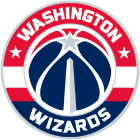 Washington
Washington
– View Wizards roster
– View Wizards salary information
In the midst of a comprehensive and long-overdue rebuild – one that has seen every tradeable player traded, 11 new players acquired since the end of last season, 14 new players acquired since the beginning of last season, a new owner brought in, potentially a new name on the way, and 100 other more subtle changes taking place – Washington are in a position to try anything. With 12 guaranteed contracts in place after a summer of rather underwhelming upheaval, the Wizards brought in six more for camp; they re-signed small forward Cartier Martin, brought in small forwards Adam Morrison and Kevin Palmer, signed draft pick centre Hamady N’Diaye, tacked on veteran big man Sean Marks, and signed guard Lester Hudson from their summer league team. The Wizards also initially signed ex-Clippers and Knicks guard Mardy Collins to their camp roster, but he failed his physical and did not join the team.
The reason for the presence of all the small forwards on that list becomes obvious when you look at the Wizards current starting lineup. At the moment, they are starting point guard Kirk Hinrich at the small forward spot, Kurt serving as the physical manifestation of Don Nelson’s Acie Law-inspired pipe dream of having a 6’3 small forward. This won’t work long term, and nor will it work short term – anyone who remembers the results of Scott Skiles trying the same thing with Hinrich back in 2007 will attest to this as being the truth. Washington have gone this route due to a lack of options at the position; despite being re-signed this summer, Josh Howard is still injured and might be for a while, while Al Thornton still hasn’t learnt how to maximize his talents and continues to take bad shots. Martin was a part of the small forward rotation at the very end of last season, playing decent defence and chipping in 6 points per game during the garbage time that was Washington’s month of April. He’s joined by Morrison, the oft-chronicled and seriously unsuccessful player, who continues to struggle with the awkward reality that he’s better at hitting tough shots than open ones, without being good enough of a player to justify taking any tough ones. And considering that the only thing he’s good at is scoring, this would be the reason why Adam Morrison’s career thus far has been spectacularly underwhelming. The knee injury didn’t help, but that’s not what caused all this. And Palmer, the other training camp swingman option, impressed the team during summer league, at which time I wrote this about him:
Palmer is a 6’6 swingman from Texas A&M Corpus Christi, who averaged 19.7ppg, 5.4rpg, 2.8apg and 2.4spg in his senior season. This was enough to get him to the Portsmouth Invitational Tournament, where he averaged 13 points, 8 rebounds, 2 assists, 2 blocks and 4 steals per game. However, he also shot only 36% from the field in doing so, and 27% from downtown. Palmer is a stat sheet wonder, as can be seen above, and does most things except shoot threes. However, he’s also extremely turnover prone, turning it over 4.3 times per game. The D stats and rebounds are nice from a guard, but if a guard can’t shoot or prevent turnovers, then he’s going to struggle.
Palmer averaged 8.0 points and 3.0 rebounds in only 17 minutes per game in summer league, shooting 57% from the field and even slashing in 50% of his threes. Another player from the summer league team to impress was Hudson, who averaged 11.2 points, 2.8 rebounds, 2.8 assists and 1.4 steals in 22 minutes per game, shooting 48% from three point range and turning it over only 6 times in 111 minutes. In summer league, that’s quite impressive. (For comparison’s sake, John Wall turned it over 21 times in 129 minutes.) As a full court point guard, pesky defensive player, and three point jump shooter, Hudson can be useful. He has $25,000 in guaranteed money to that end. However, he’s also already 26.
N’Diaye barely played in summer league, much to this annoyance of his agent, as Epic Vale started four of the five games at centre instead. The Wizards didn’t really need to do this; McGee’s place in next year’s rotation was (or should have been) already secured, and as a third year player, all his presence in summer league did was minimise the opportunities for N’Diaye. (The third centre on the roster, Aaron Pettway, had 14 fouls in 33 minutes. Not even Josh Lomers had that many.) With his minutes gone, N’Diaye did not have much opportunity to impress, and thus he did not have much opportunity to drum up overseas interest; therefore, here he is, on a completely unguaranteed one year minimum salary contract, trying to make it as a young project big man on a team already with two of those. Hamady has a chance of sticking, but this situation isn’t ideal for anyone.
Marks has been in the NBA for over a hundred million years, by which I mean ten years. He has barely played in that time, but has continued to make it back because of his talent level. That talent level has never translated into much production, yet Marks can shoot from mid-range, runs well enough, and gives forth the kind of effort that gets a marginal NBA talent such a lengthy NBA career. Unfortunately, he’s also a slightly thin 6’10, does not like physical play, and just turned 35. So this is probably his last chance. If it doesn’t work out, and it probably won’t, then he might go home.
Prediction: Even though they’re starting three guards – which would imply a lot of guard depth – the Wizards could use another one. Hudson is that player, and is the best of the bench. N’Diaye also has a chance to stick, because while the Wizards have a multitude of backup big man options, one of them is Hilton Armstrong. Using the same logic, Marks has a chance, even moreso when you consider that this is the team that kept Paul Davis out of camp last year. But he’s a decade older than N’Diaye, and not any noticably better any more. And of the three small forward options, Martin is best.












